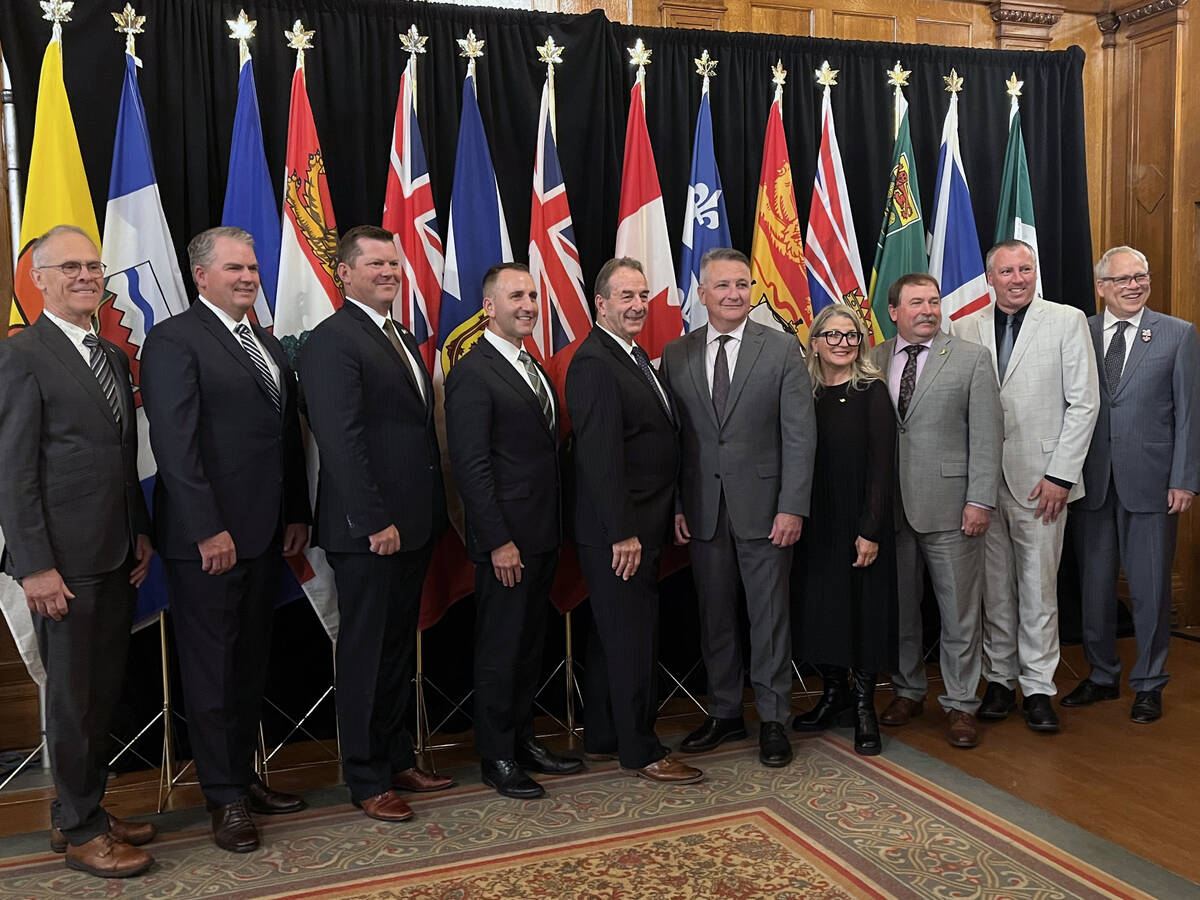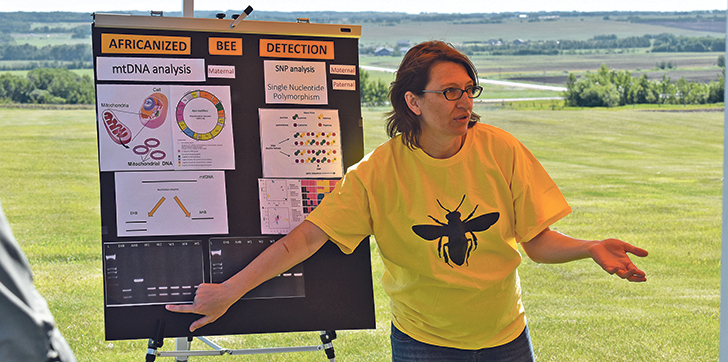BEAVERLODGE, Alta. — Variability of traits in honeybees is similar to the variability of traits in other livestock, and researchers are working to identify markers so beekeepers and honey producers can select for the traits they want most.
Renata Borba, a post-doctoral researcher at the Agriculture Canada research farm in Beaverlodge, said work on the project, dubbed Bee’Omics, is underway in five regions of the country.
“We are looking at 12 economically valuable traits, traits that beekeepers find very important,” said Borba during the 64th annual beekeepers field day at the research farm.
Read Also

Agriculture ministers commit to enhancing competitiveness
Canadian ag ministers said they want to ensure farmers, ranchers and processors are competitive through ongoing regulatory reform and business risk management programs that work.
“All 12 traits that we are studying are traits that are heritable. We’re going to collect samples from these colonies and look at their protein and their DNA to find these pieces, these specific proteins or group of proteins, or one specific gene or group of genes, that correlate to that behaviour.”
The traits include honey production, brood production, hygienic behaviour, grooming behaviour, overwintering ability, aggression behaviour, varroa resistance, healthy gut biome and several other innate immunity characteristics.
“We’re developing these markers so beekeepers can select for colonies that have those traits and they can breed from those colonies, so they can have better colonies, healthier colonies, colonies that produce more,” said Borba.
 Amy Needham and Ian Hof, who both work on the pest management team for the city of Grande Prairie, extract nectar from canola flowers during the open house. | Barb Glen photo
Amy Needham and Ian Hof, who both work on the pest management team for the city of Grande Prairie, extract nectar from canola flowers during the open house. | Barb Glen photo
Honey and brood production are obviously important to beekeepers. Hygienic behaviour, for example, may be a lesser known but highly desirable trait.
Hygienic bees can quickly identify brood that is infected, sick or dead and remove it from the colony before any virus or disease spreads.
Bees with good grooming be-haviour are able to more readily remove varroa mites from their bodies. Varroa mites carry a virus that kills bees.
“Some genetic lines are known for having the ability to reduce on their own the infection level of varroa mites,” Borba said.
Genomics and proteomics are both being used as research tools so researchers can identify more robust markers that beekeepers can use for a long time.
This is the second year of the Bee’Omics project with research underway in Beaverlodge, Lethbridge, British Columbia, Manitoba, Quebec and Ontario.
Borba said about 1,000 colonies were studied last year, and this year researchers will repeat and validate the markers identified last year. That will involve testing about 550 colonies across Canada.
















